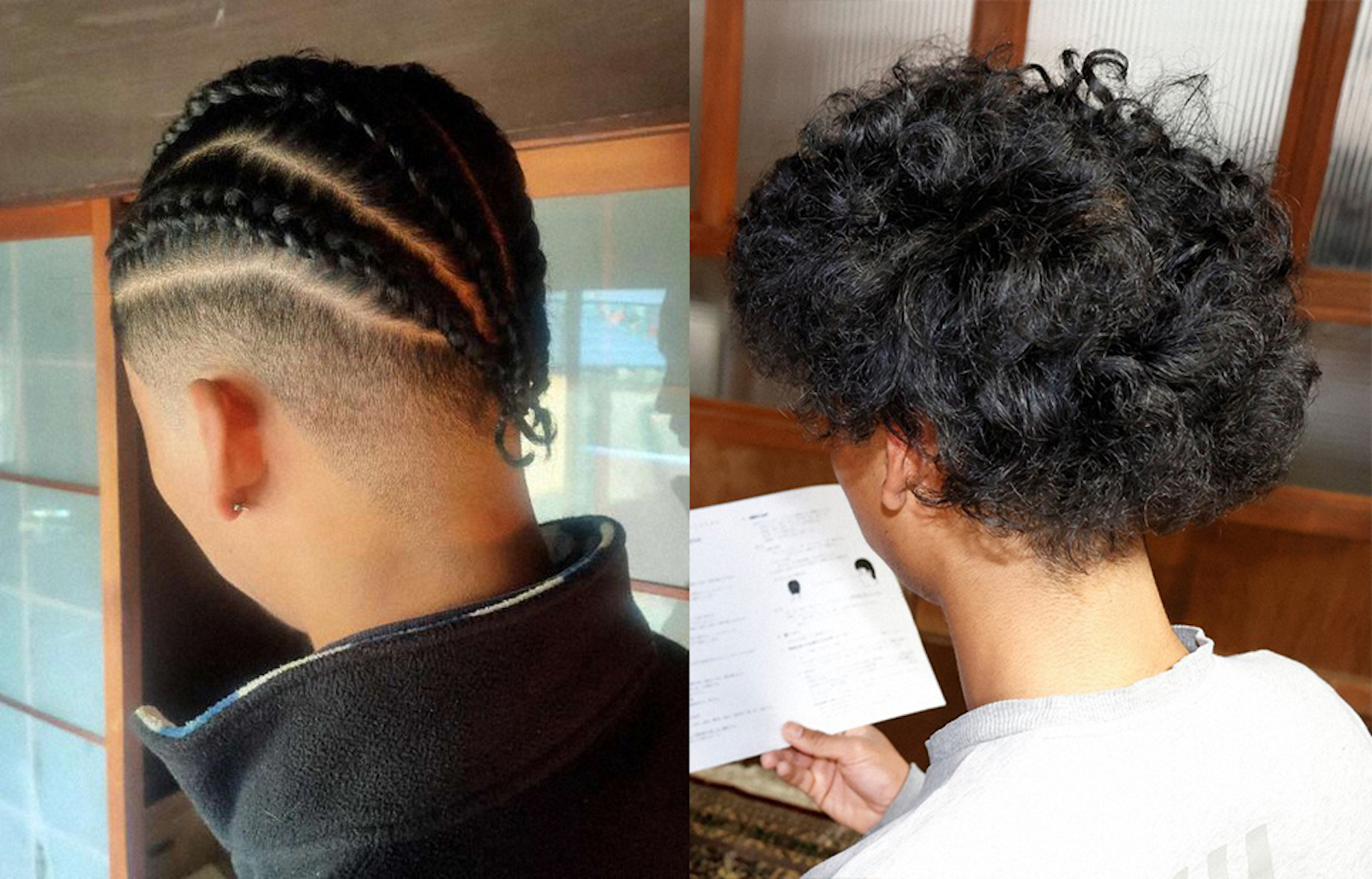
Half-Black Student in Japan Segregated During Graduation For Wearing Cornrows
The 18-year-old wanted to celebrate his high school graduation by wearing cornrows, but was made to sit alone and away from his classmates.
The 18-year-old wanted to celebrate his high school graduation by wearing cornrows, but was made to sit alone and away from his classmates.
By Hanako Montgomery
March 28, 2023, 8:09am

THE STUDENT BRAIDED HIS HAIR (LEFT) AHEAD OF HIS HIGH SCHOOL GRADUATION. PHOTO: IMAGE VIA MAINICHI SHIMBUN
A Black and Japanese teenager in Japan was pulled away from his classmates during his graduation ceremony because he showed up with cornrows, according to local reports.
The unnamed 18-year-old, who has black and curly hair, wore braids because his high school graduation was a special occasion, Japanese newspaper Mainichi Shimbunreported on Tuesday. He wanted to show up with “neat hair” to the February ceremony, so he asked his father—a Black researcher from New York—about the hairstyle.
But his public high school, located in the western prefecture of Hyogo, said his cornrows were against the rules. Administrators made him sit on the second floor, segregated from his classmates. Teachers also told him he wasn’t allowed to respond to his name when it was called.
The episode has prompted a debate about Japan’s notoriously strict school rules, known as burakku kousoku, as well as discriminatory actions against racial minorities in a country with a 98 percent ethnic Japanese population.
“I was surprised to see a response similar to the old U.S. racial segregation policy of ‘separate but equal.’ Why do you have to worry about the hairstyle? It’s a graduation ceremony,” Yuichiro Tamaki, leader of the opposition Democratic Party for the People, tweeted. He added that Japan needs to be better at accepting diversity in education.
In an interview with Mainichi Shimbun, the student’s father said: “Braiding is a way for Black people to arrange their hair, the same way that Japanese people part their hair. It’s discriminatory to assume that a hairstyle with roots is a violation without any reason.”
Schools in Japan have repeatedly come under fire for imposing draconian school rules on their students. Among the many restrictions, some institutions dictate sock and skirt length, underwear color and eyebrow shape.
Hair is heavily regulated as well, with some schools demanding photographic proof that a pupil’s locks aren’t naturally black and straight. One school went so far as to edit a student’s yearbook photos so her brown hair would appear darker.
Asao Naito, an associate professor of sociology from Meiji University who has studied burakku kousoku, was unsurprised by the school’s reaction to the student’s cornrows.
Japanese schools place far greater importance on the school’s image as a whole than a student’s individualism, Naito said. To do this, institutions impose strict regulations in ways that would seem totally unreasonable by society’s standards.
As a result, the regulations emphasize the collective and begin to make the school feel like a cult, Naito said. “They strictly enforce obedience in the form of hairstyles, skirt lengths, underwear colors, and so on, as an act of showing that the human being belongs entirely to the school and is a servant of the school,” he told VICE World News.
Motoki Sugiyama, a former middle school teacher, said Japan takes for granted that the majority is Buddhist, black-haired, heterosexual and Japanese by ancestry. That’s why there’s limited understanding of other cultures, an issue that’s reflected in how schools deal with non-Japanese pupils, he said.
“Unless the Japanese people change, restrictions on appearances in schools will not disappear,” he told VICE World News.
Restrictive school rules in Japan date back to at least the 1870s, when the central government began regulating education institutions. Attention to such regulations heightened in the 1970s and 1980s, when students increasingly protested against burakku kousoku. Educators were also passing stricter rules to crack down on bullying and school violence during this period.
Now, some institutions are getting rid of the repressive regulations. Southern Japan’s Fukuoka City plans to eliminate all school rules considered to be unreasonable—such as ponytail bans—by the new school year in all of the city’s junior high schools. More schools are also offering genderless uniforms to respect pupils’ gender diversity and sexual identity.
The rules of the school in Hyogo, which hasn’t been identified, reportedly stipulate that hairstyles should be “clean and appropriate for high school students, without being influenced by fashion trends.” Boys must make sure their hair doesn’t cover their eyes, ears or shirt collars. Though bleaching, dyeing, and hair-drying are prohibited, braiding is not explicitly specified.
When asked why the student was restricted from participating in his graduation, the school simply said the hairstyle wasn’t allowed and that it didn’t mean he wasn’t allowed to attend—he just had to sit somewhere else.
Reflecting on the incident, the graduate told Mainichi Shimbun: “This hairstyle is part of my father’s roots and is my culture as a Black man.”




 good luck not going extinct...
good luck not going extinct...



 he part of helping the population grow and they do him like this?
he part of helping the population grow and they do him like this?